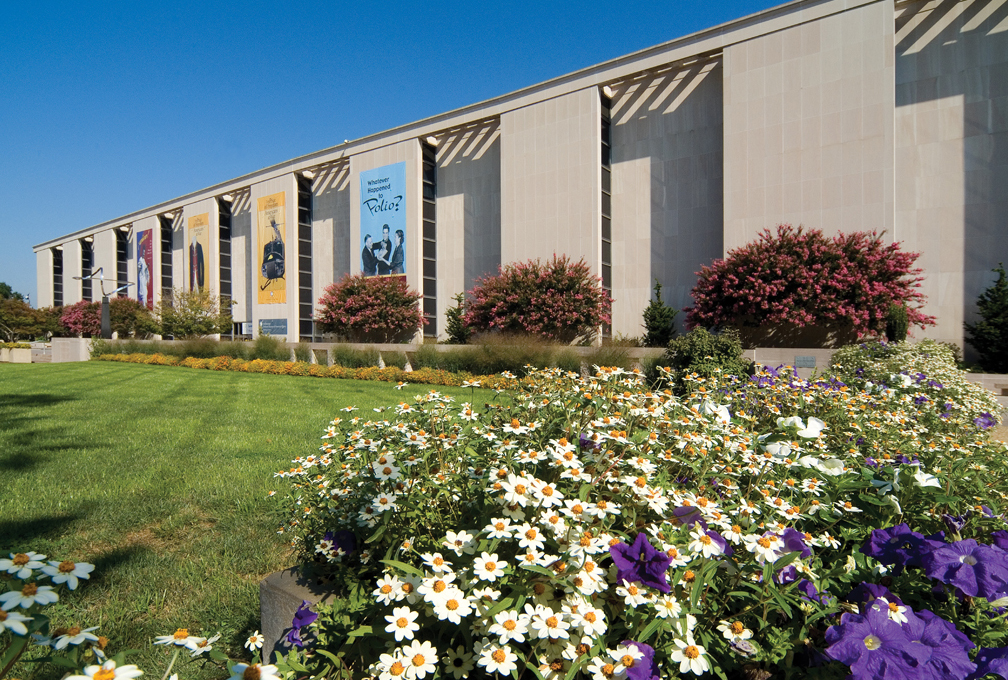Smithsonian Curators To Collect 2020 Presidential Election Memorabilia
Curators from the Smithsonian’s National Museum of American History are traveling to a variety of campaign events, including the Feb. 3 Iowa caucus and the Feb. 11 New Hampshire primary to collect materials and memorabilia reflecting the electoral process. In addition to Iowa and New Hampshire, political history curators Lisa Kathleen Graddy, Jon Grinspan and Claire Jerry will collect from the Democratic and Republican national conventions this summer to augment the national collection, as well as from debates, rallies, protests and digital campaign activities.
“By actively collecting new materials at the primaries and the party conventions every four years, the museum documents the political campaign process and can share the spirit and complexity of the presidential campaigns with the American public, both now and in the future,” said Anthea M. Hartig, the Elizabeth MacMillan Director of the museum.
The museum’s Political Campaign collection of more than 100,000 objects is the largest of its kind, containing artifacts dating as far back as the inauguration of President George Washington. The collection includes items related to presidential history and political campaigning, as well as the history of the White House and first ladies; civil rights, women’s suffrage and reform movements; the World War II home front; and labor history.
“These objects represent a celebration of democracy and how people and parties express their identity and their campaigns,” Jerry said. “Whether it’s handmade or mass-generated, each object represents history in the making by showing how candidates communicate with the public and how the public in turn communicates with the candidates.”
The broader political history collection includes some of the country’s most important national treasures, including the small portable desk on which the future President Thomas Jefferson wrote the Declaration of Independence, the top hat President Abraham Lincoln wore the night he was assassinated and items from the 2016 presidential election.
The museum will open an exhibition on the power of campaign rhetoric and language in July 2020 prior to the party conventions. The display will share the value and role of political or campaign words and language, encouraging visitors to look beyond the sound bites. It will feature historical images and an array of words in a super-graphic as well as a podium from the 1976 presidential debate, a speech timer from the 2012 convention and campaign material from 1896, 1964 and 1992. Words themselves will be considered “objects.”
The ongoing collecting is an initiative to acquire materials that capture the atmosphere and the democratic spirit of the primaries and conventions. It allows researchers and visitors to observe and compare how each election season brings new trends, strategies and methods of communication to the political forefront. A large selection of objects collected in the past is on view in “American Democracy: A Great Leap of Faith,” an exhibition that examines the bold experiment to create a government “of the people, by the people and for the people.
Through incomparable collections, rigorous research and dynamic public outreach, the National Museum of American History explores the infinite richness and complexity of American history. It helps people understand the past in order to make sense of the present and shape a more humane future. The museum is located on Constitution Avenue N.W., between 12th and 14th streets, and is open daily from 10 a.m. to 5:30 p.m. (closed Dec. 25). Admission is free. For more information, visit http://americanhistory.si.edu. For Smithsonian information, the public may call (202) 633-1000. On social, the museum can be found on Facebook at @americanhistory, and on Twitter and Instagram at @amhistorymuseum.
# # #
SI-38-2020

